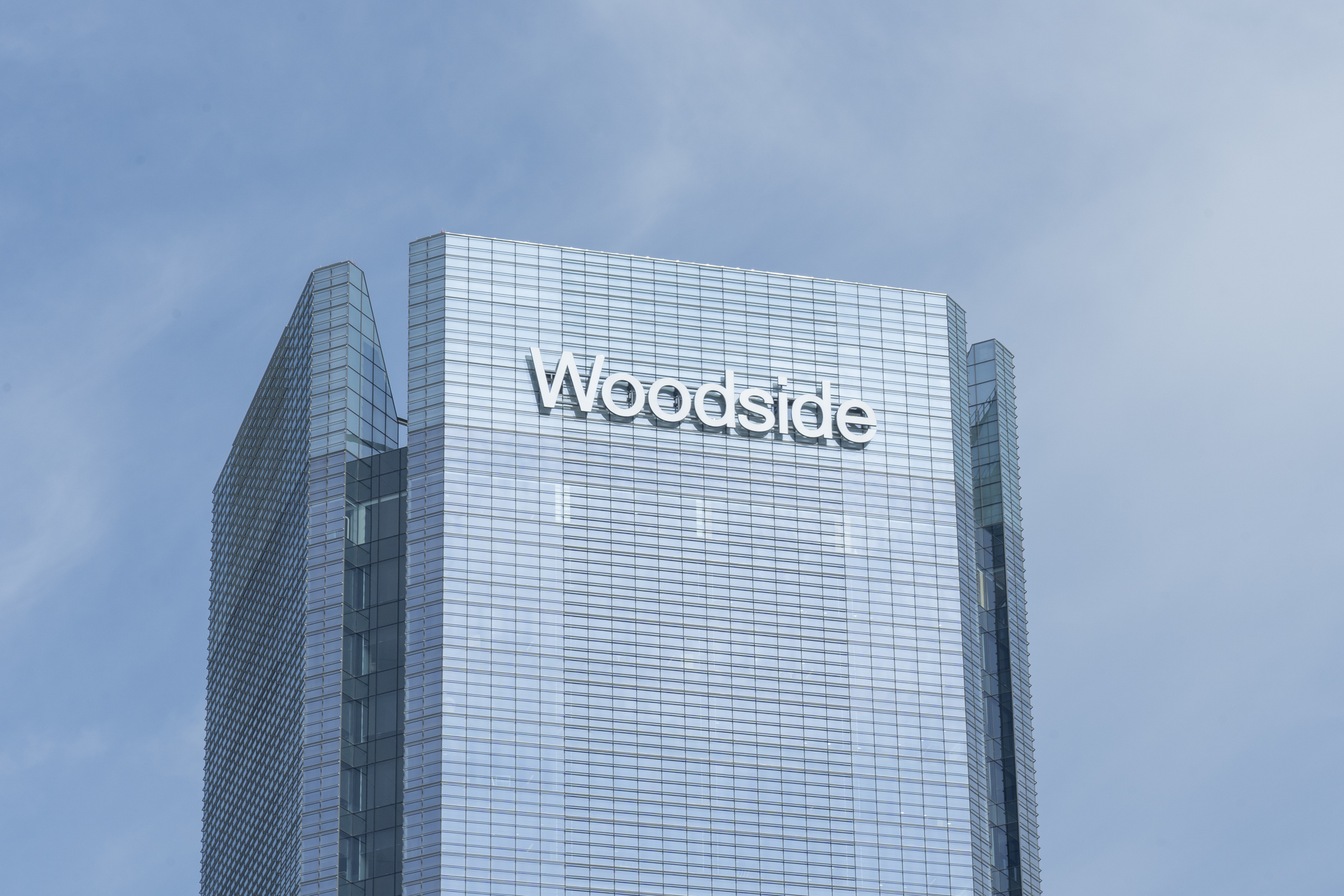Woodside Energy: an undervalued energy play
Woodside Energy offers a cheap way to invest in the growth of the global LNG market. Should you invest?


When Russia invaded Ukraine in 2022, energy prices spiked as traders rapidly tried to price in the impact on the market. In the following months, Russia, formerly one of the world’s largest suppliers of hydrocarbons, was steadily cut out of markets as sanctions bit. Energy markets had to rebalance, and the shock waves are still being felt today.
As one of Russia’s largest energy customers, Europe felt the impact of the changes more than any other region. It depended on Russia for gas, and traders had to scramble to find new supplies when key pipelines were cut off. Countries turned to the liquefied natural gas (LNG) market for these supplies.
LNG is made by cooling natural gas to about -162°C and removing impurities such as carbon dioxide and dust. When the gas is cooled to a liquid, it’s much easier to transport. It takes up just 1/600th of the volume and can be transported in giant ships from one side of the world to the other. When LNG arrives at a destination in its supercooled liquid state, it is then turned back into a gas that can be used in power plants or even to power vehicles.
MoneyWeek
Subscribe to MoneyWeek today and get your first six magazine issues absolutely FREE

Sign up to Money Morning
Don't miss the latest investment and personal finances news, market analysis, plus money-saving tips with our free twice-daily newsletter
Don't miss the latest investment and personal finances news, market analysis, plus money-saving tips with our free twice-daily newsletter
However, getting natural gas into this cooled state requires complex infrastructure, which can cost tens of billions of dollars to construct. That’s where companies such as Australia’s Woodside Energy (LSE: WDS) come into play
Woodside Energy enters a growing market
LNG was already being touted as one of the key technologies that can help with the energy transition. Natural gas is cleaner and more energy-efficient than other hydrocarbons such as oil and coal. The snag is that it is difficult to transport, but LNG gets around this.
Gas-fired power plants are likely to remain a key part of all energy networks despite the rise of renewables, as they can be quickly turned on to fill generation gaps when the wind isn’t blowing or the sun isn’t shining. Gas-fired power is also much cheaper than nuclear.
However, the Ukraine war supercharged the growth of the global LNG market. LNG imports into the EU grew from 81 billion cubic metres (bcm) in 2021 to 139bcm in 2023, making it a key source of gas supply for the EU with more than 40% of total gas imports. This tipped the global market from a small surplus at the beginning of 2022 to a deficit. Demand for the fuel is expected to grow over the coming decade, and supply is expected to ramp up as well.
Analysts at investment bank ING expect a “wall of LNG export capacity” over the next six years. They project that global demand is expected to increase 35% by the end of the decade, driven by demand from Asia. In comparison, supply is expected to increase by 45% as new facilities in the US and Qatar come online.
These projections should be taken with a pinch of salt (for instance, Woodside reckons demand will jump 50% over the same period). Major projects in regions such as Russia, Mozambique and even the US have been dogged by political interference, budget overruns and technical challenges. And the cost and complexity of building a facility to turn natural gas into LNG cannot be understated.
Chevron’s Gorgon project in Australia is one of the world’s largest LNG projects and makes a great case study. When construction started in 2009, Chevron and its partners put the final cost at $37 billion. By the time production began in 2017, it had cost $54 billion.
Should you invest in Woodside Energy?
Woodside has ambitions to turn itself into one of the world’s largest LNG players. Just under 50% of the firm’s output is now LNG. The rest is crude oil and other oil and gas products. While its current LNG capacity of 12 million tonnes per annum (mtpa) is still only about a fifth of that of industry giant Shell, it has laid out plans for rapid expansion.
In 2022, it completed a merger with the oil and gas arm of miner BHP, and followed this by adding a London listing to its existing one in Sydney. Last year, it explored a merger with smaller Australian peer Santos, but that deal fell apart in February. In July, it paid $900 million to acquire Tellurian, a US firm that had been struggling to raise cash to develop an ambitious LNG project called Driftwood on the US Gulf coast in Louisiana that could eventually produce 27.6mtpa. Last month, it paid $2.4 billion to acquire a low-carbon ammonia project in Texas.
Woodside thinks it has two edges over other firms. It can’t compete with Middle Eastern producers in terms of cost, but its Australian projects can outperform projects in the US. Unlike other producers, which sign long-term sales contracts with customers, Woodside has moved to what it calls “portfolio marketing”.
Essentially, that means the company can react quickly to supply and demand changes in the market. Being good at portfolio marketing requires flexibility and an active trading fleet. Woodside has six LNG carriers under long-term agreements, and many more are under short-term contracts. Five more ships are under construction for long-term contracts, and these will be tied to Woodside’s new Scarborough LNG project, which is due to deliver its first gas in 2026, with an expected peak output of 8mtpa.
Woodside has also adopted a different approach to building new projects. Rather than taking on all the risk, it seeks partners, such as Japanese groups JERA and LNG Japan and US private-equity fund Global Infrastructure Partners on Scarborough. It hopes to replicate the same approach with Driftwood, which could have a final cost of $25 billion.
Despite the growth prospects, Woodside looks cheap, trading at just 10.5 times 2024 earnings. It also offers a dividend yield of 7.5%.
This article was first published in MoneyWeek's magazine. Enjoy exclusive early access to news, opinion and analysis from our team of financial experts with a MoneyWeek subscription.
Get the latest financial news, insights and expert analysis from our award-winning MoneyWeek team, to help you understand what really matters when it comes to your finances.

Rupert is the former deputy digital editor of MoneyWeek. He's an active investor and has always been fascinated by the world of business and investing. His style has been heavily influenced by US investors Warren Buffett and Philip Carret. He is always looking for high-quality growth opportunities trading at a reasonable price, preferring cash generative businesses with strong balance sheets over blue-sky growth stocks.
Rupert has written for many UK and international publications including the Motley Fool, Gurufocus and ValueWalk, aimed at a range of readers; from the first timers to experienced high-net-worth individuals. Rupert has also founded and managed several businesses, including the New York-based hedge fund newsletter, Hidden Value Stocks. He has written over 20 ebooks and appeared as an expert commentator on the BBC World Service.
-
 High earners face £15k income hit by 2029 following Autumn Budget
High earners face £15k income hit by 2029 following Autumn BudgetRachel Reeves’s Autumn Budget means high earners – or HENRYs – are now looking at an income hit running into the thousands. Can you avoid it?
-
 Millions underestimate how many paydays are left until retirement - why you should be counting your payslips
Millions underestimate how many paydays are left until retirement - why you should be counting your payslipsKeeping track of how long you will be earning a salary for can help work out how much you need to put into a workplace pension
-
 British blue chips offer investors reliable income and growth
British blue chips offer investors reliable income and growthOpinion Ben Russon, portfolio manager and co-head UK equities, ClearBridge Investments, highlights three British blue chips where he'd put his money
-
 Coreweave is on borrowed time
Coreweave is on borrowed timeAI infrastructure firm Coreweave is heading for trouble and is absurdly pricey, says Matthew Partridge
-
 Renewable energy funds are stuck between a ROC and a hard place
Renewable energy funds are stuck between a ROC and a hard placeRenewable energy funds were hit hard by the government’s subsidy changes, but they have only themselves to blame for their failure to build trust with investors
-
 Profit from document shredding with Restore
Profit from document shredding with RestoreRestore operates in a niche, but essential market. The business has exciting potential over the coming years, says Rupert Hargreaves
-
 The war dividend – how to invest in defence stocks as the world arms up
The war dividend – how to invest in defence stocks as the world arms upWestern governments are back on a war footing. Investors should be prepared, too, says Jamie Ward
-
 Literacy Capital: A trust where great returns fund a good cause
Literacy Capital: A trust where great returns fund a good causeThere’s plenty to like about specialist private-equity trust Literacy Capital, says Max King
-
 An AI bust could hit private credit – could it cause a financial crisis?
An AI bust could hit private credit – could it cause a financial crisis?Opinion Private credit is playing a key role in funding data centres. It may be the first to take the hit if the AI boom ends, says Cris Sholto Heaton
-
 8 of the best ski chalets for sale now
8 of the best ski chalets for sale nowThe best ski chalets on the market – from a traditional Alpine-style chalet in Switzerland to an award-winning Modernist building in Japan’s exclusive ski areas